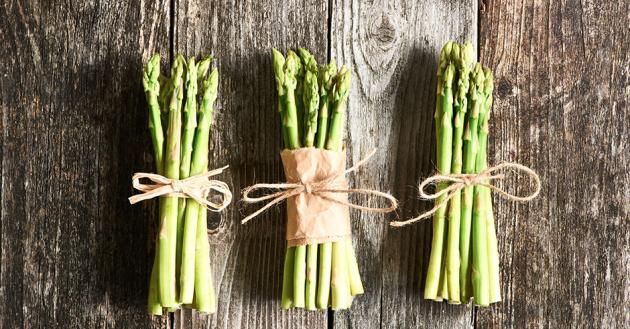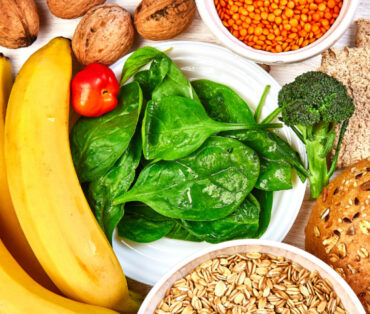Add These 5 Spring Fruits and Veggies to Your Diet
Spring expands the variety of seasonal fresh fruits and vegetables at the supermarket and the farmer’s market. Here are five you’ll want to try for their fabulous flavor and nutrition they deliver. Enjoy!
Asparagus
This pencil-thin vegetable was prized by the Greeks and Romans for its supposed medicinal and aphrodisiac properties.
Love it:It might not be an aphrodisiac but asparagus certainly offers health benefits. It is among the vegetables highest in folate, a vitamin important to healthy fetal development and which may play a role in prevention of cancer, cardiovascular disease, dementia, and depression. Asparagus is also a good source of potassium, antioxidant vitamins A and C, and fiber.
Prepare it: Asparagus is best prepared the same day you bring it home from the market or harvest it from your garden. It loses its flavor fast. Steam for 4 to 8 minutes depending on the thickness of the spears (an asparagus steamer does the job well but isn’t necessary).
Forgo high-fat hollandaise sauce; a simple preparation is not only healthier but allows the flavor of asparagus to shine. Sprinkle steamed asparagus with a little olive oil, lemon juice, salt and pepper. Raw, it makes a delicious addition to a crudité plate served with a low-fat dip made with yogurt.
Avocado
Contrary to popular thought, the avocado is a fruit not a vegetable and grows on a tree. To test for ripeness, gently squeeze the fruit; it should feel firm yet still give to pressure.
Love it: A nutrient-dense food, one-fifth of a medium avocado contains 50 calories and contributes nearly 20 vitamins and minerals. Most of the fat in an avocado is the monounsaturated kind, which may help lower cholesterol and decrease the risk for heart disease. In addition, consuming avocados helps increase the absorption of fat-soluble vitamins such as A, D, K, and E.
Prepare it: Add avocado to salads, sandwiches, even omelets. Or make guacamole: mix avocado with minced garlic, salsa, a squirt or two of lime juice, chili power, chopped cilantro, and a little non-fat sour cream (optional).
Blood Oranges
Rounding out the peak orange season, which runs from January through May are the blood oranges. As the name implies, the blood orange has a red to burgundy-colored flesh.
Love it: One tart-sweet tasty blood orange is rich in vitamin C, a powerful antioxidant the helps healing, boosts your immune system, and improves absorption of iron from foods. One medium-size fruit delivers about 70 calories and 3 grams of fiber.
Prepare it: Peel ‘em and eat or toss them in with spinach and/or other greens in a fresh spring salad.
Kale
This cold-hardy green bursts forth on the scene early in spring, with its bounty of nutrients. Small-leaved varieties are more tender than the bigger-leaved ones, which are best suited for soup.
Love it: There is nothing shy about the flavor of this deep, earthy, dark green, and it is packed with nutrients, including vitamins K, which helps prevent osteoporosis, A, and C. One cup of loosely packed 1-inch pieces of contains only 8 calories.
Prepare it: Sauté kale with olive oil mixed with a dash of burnt sesame oil and a strip of bacon, the smokiness of the bacon complements the boldness of the green. Add chopped kale to soups, stews, salads, or stir-fries, or blend it into your favorite green smoothie recipe.
Kiwi fruit
The kiwi fruit originated in China and was considered a delicacy by the Kahns, who relished the green color and the fresh, sweet flavor. As the fruit migrated beyond Chinese borders, it became known as the Chinese gooseberry. In the 1960’s it was introduced here in the United States, and called kiwifruit after the name of a fuzzy brown bird.
Love it: Another nutrient-dense food, one delicious kiwi provides more than 100 percent of the recommended daily value for vitamin C and 8 percent of your daily fiber needs, while contributing a mere 32 calories.
Prepare it: Cut the kiwi in half and then use a spoon to scoop out the sweet, succulent flesh. Don’t be afraid to eat the fuzzy skin—it’s packed with fiber. It also works wonderfully in fruit salads and smoothie. Slice a couple kiwi fruit into rounds, place in a glass dessert dish, and top with a dollop of whipped cream.








